There are two great joys in life - eating and succulents. This is how to combine them.
Believe it or not, succulents have been a constant companion to humans and other animals for thousands of years. They provide protection, barriers, water, and even food. From the prickly pear and its sweetness to the medicinal uses of Aloe, succulents have a lot to offer.
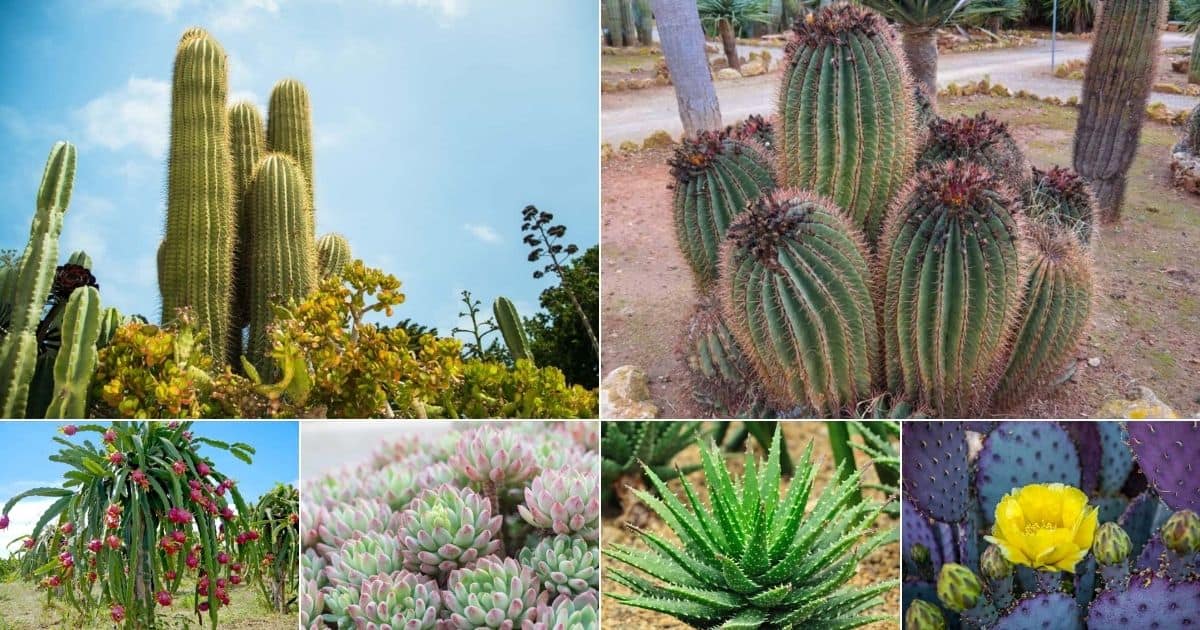
Personally, I love getting my hands on a piece of ripe red or white dragon fruit: they are so tasty and have such a sweet zing to them!
As a native Texan, I am very familiar with prickly pears, and since a young age, I would walk along, cut off the skins, and eat them as a snack when hiking. The deepest purple would always stain my fingers for days … but it was SO worth it. As I learned more about prickly pears, I learned that there were even prickly apples that were the size of my fist and larger! How insane is that?
So, this spiked a thought: how many succulents can you actually eat? If you have ever wondered about that as well, then this post is for you. I’ll include a few preparations as well so that you can get an idea of how to use them!
Jump to:
- A Note on Cactus Fruit
- Edible Succulents
- 1. Dragon Fruit, Hylocereus undatus
- 2. Barrel Cactus, Ferocactus wislizeni
- 3. Saguaro Cactus, Carnegiea gigantea
- 4. Stone Crops, Sedum
- 5. Prickly Pear, Opuntia ficus-indica
- 6. Aloe, Aloe barbadensis
- 7. Peyote
- 8. Portulacaria afra
- 9. Portulaca oleracea
- 10. Yucca Flower
- 11. Salicornia europaea
- 12. Hoodia Gordonii
- Conclusion
A Note on Cactus Fruit
Before we dive into the types of fruits and succulents that are edible, keep in mind one of the biggest deterrents for eating cactus fruits is the amount of seeds. Personally, I enjoy the crunch of the seeds, and they often aren’t too bitter when the fruit is fully ripe.
Ancestors of local areas also used to eat the paddles on prickly pears, and the seeds were used as a digestive to help clear the system. These practices are still followed today, so getting your dose of delicious prickly pears is definitely a great way to keep yourself healthy!
Edible Succulents
Although some succulents are toxic to pets or children, many are not only edible but delicious. They can be eaten in a variety of ways: raw, grilled, juiced, or mashed. The best part? Most of these are easy to grow!
1. Dragon Fruit, Hylocereus undatus
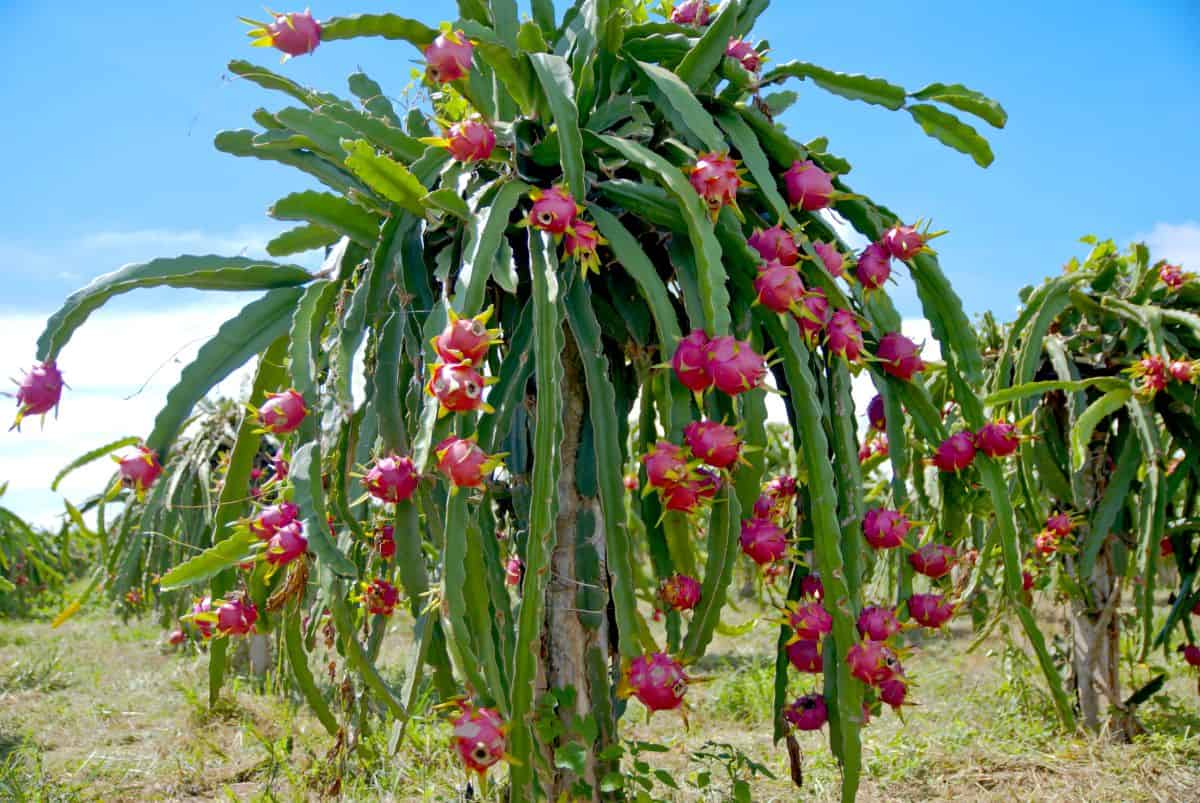
Buy it from:
You've probably tasted this exotic fruit in a smoothie or some candy, but did you know it is a succulent? It has many names, such as Queen of the Night, night-blooming cereus, or pitaya. It grows on a long vine-like cactus and has yellow, orange, or pink fruit. The flowers of all Hylocereus plants only bloom at night - but it's worth going out of your way to see them!
How to eat:
Peel off the skin and eat the white, fleshy part. It is edible while raw but might taste better in a smoothie or salad. The taste is somewhat bland but still very pleasant!
2. Barrel Cactus, Ferocactus wislizeni
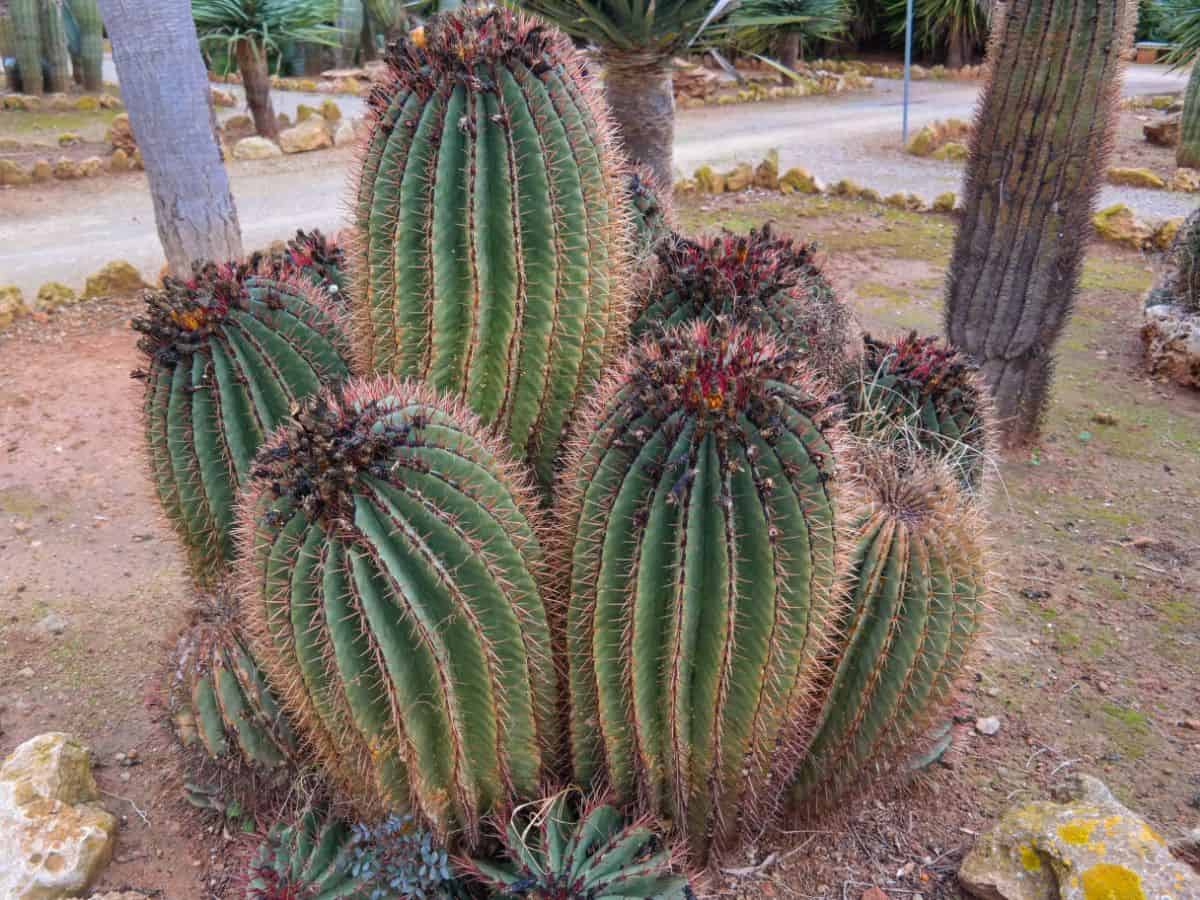
Buy it from:
There are lots of species of barrel cacti, but wislizeni is the most palatable. It looks unappetizing because of the dense spines, but almost every part of the cactus is edible! Bonus: They are easy to grow from seeds. Learn how to grow cacti and succulents from seeds here.
No products found.
You probably won't make a meal out of one of these, but this information will be nice to know if you're ever lost in the desert and dying of thirst or hunger!
How to eat:
You can eat the yellow flowers it produces or wait until they bear fruit. The fruit is edible, albeit tough and sour. The seeds in the fruit are also edible but may taste better lightly roasted or ground up.
To access the flesh of the cactus, use a torch to burn off the spines. The inner meat is spongy and bitter - try seasoning it with salt or sugar!
3. Saguaro Cactus, Carnegiea gigantea
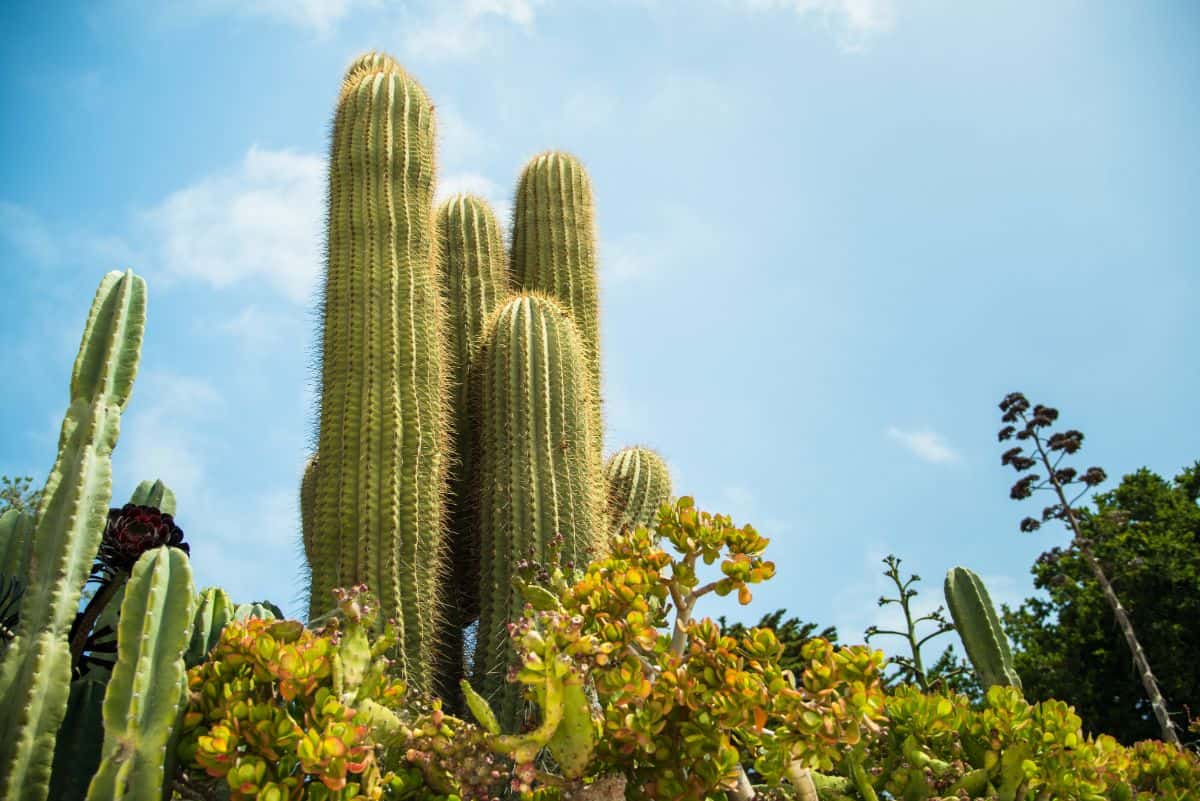
Buy it from:
Well, of course, we included the saguaro! These iconic Western American plants have saved countless cowboys, and now they can save you too! That stoic posture belies some delectable fruit and sumptuous succulent steaks! It has a gorgeous white flower that only blooms at night once the desert heat fades.
Note that saguaro can take decades to mature and won't bear any fruit until then. It is also illegal to tamper with or move them in several states (Arizona, for example). They can be hard to come by, but kudos to you if you acquire one!
How to eat:
The fruit is bright red when ripe. It is somewhat pulpy but sweet. The saguaro cactus meat itself is also edible. It holds a lot of liquid, although it doesn't taste too great.
4. Stone Crops, Sedum
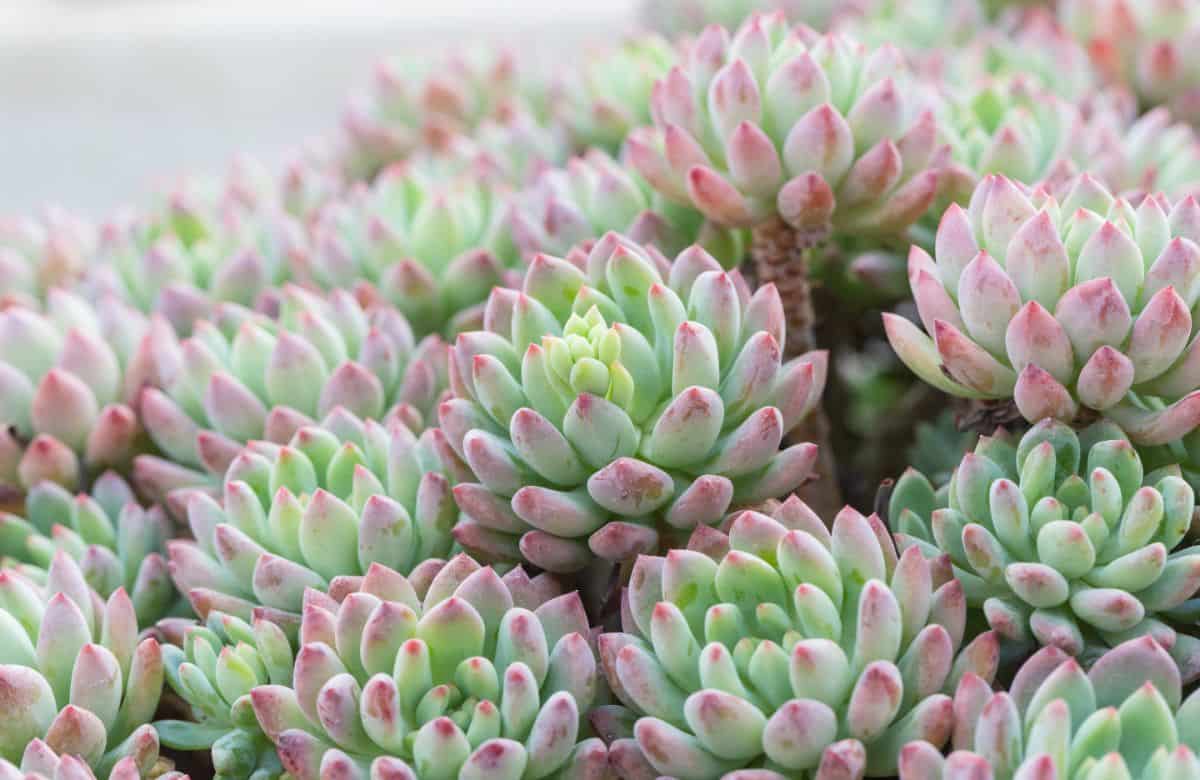
Buy it from:
Sedum is all over the place, literally and figuratively. They are excellent ground-cover plants that spread quickly and retain that appealing succulent look. There are so many species, and just about all of them are edible! You can often buy them in trays at big box stores in the garden section!
How to eat:
These guys are fine to eat raw! They taste a little bit peppery. Some species are bitter. I wouldn't eat them by themselves, though! Try putting it in a salad or stir fry!
NOTE: In large quantities, Sedum will give you an upset stomach! Everything in moderation, people!
5. Prickly Pear, Opuntia ficus-indica
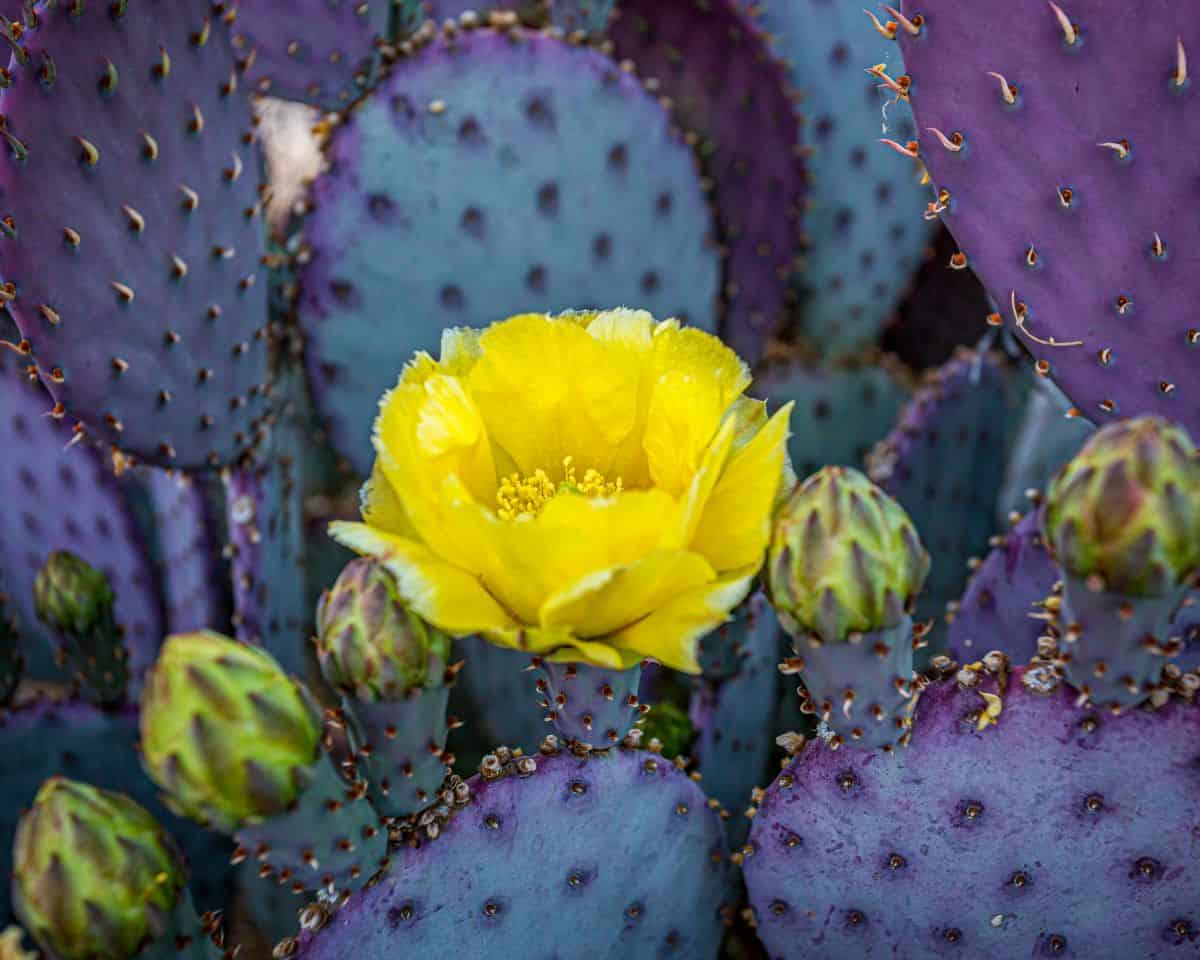
Buy it from:
Prickly Pear, Indian Fig, Cactus Pear - whatever you wanna call it, this is among the most delicious of succulents. While the ficus-indica species is most often used commercially, you can actually eat any kind of Opuntia! They are easily recognizable by their large, flat "pads".
How to eat:
The pads should be peeled, and the fleshy fruit within should be devoured. It is quite sweet, although it has a lot of seeds. The pads of the cactus are also edible. You have to be careful with the spines! In addition to the large spikes, they also have lots of tiny "hairs" which are easily removed with a flame. The peeled pad can be grilled, broiled, or eaten raw!
6. Aloe, Aloe barbadensis
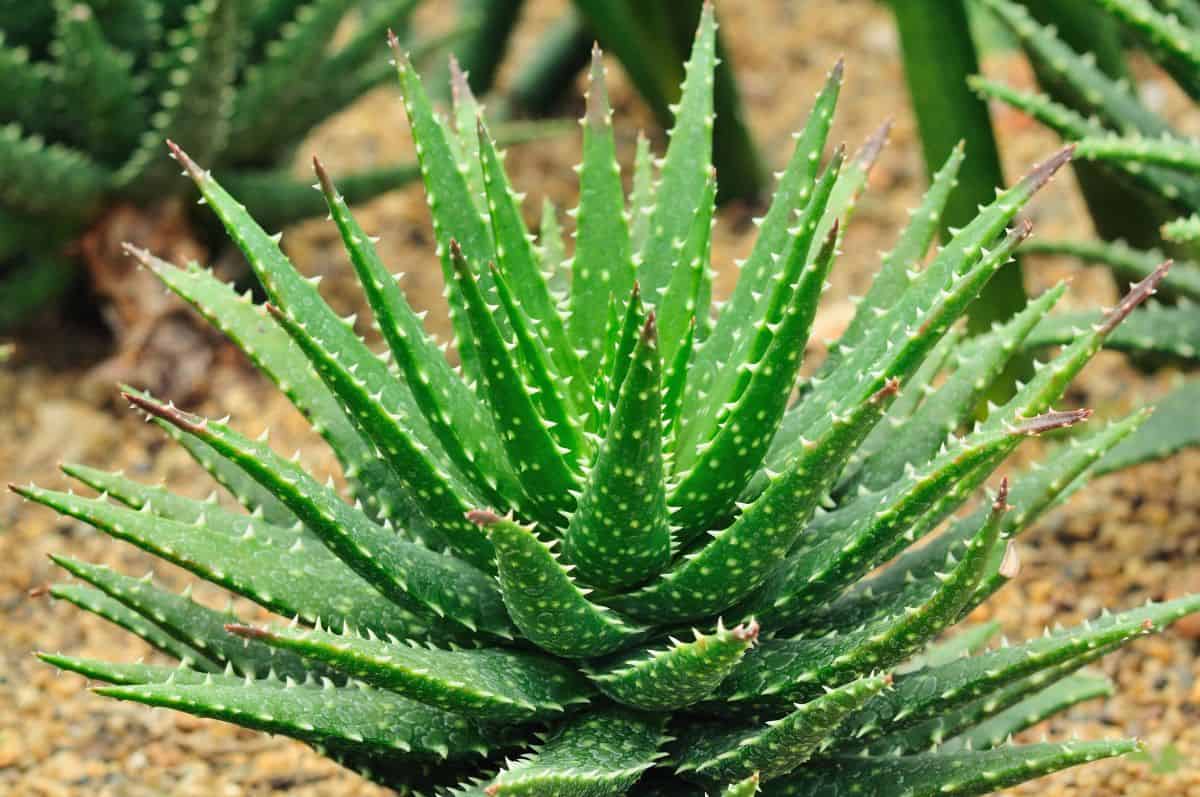
Buy it from:
We are all familiar with Aloe vera. Everyone knows about its healing properties for burns. You might have even tried one of those aloe drinks! But have you ever taken a bite out of one? You could! Aloe barbadensis is the most edible Aloe, and the one usually used for food. Don't go munching on any old aloe you see! Some are poisonous.
How to eat:
Remove the skin of the aloe. The flesh inside can be eaten raw or cooked. I recommend putting it in a smoothie. Some people like to put livers in salads. To get rid of that sticky, slimy texture, you can poach it!
7. Peyote
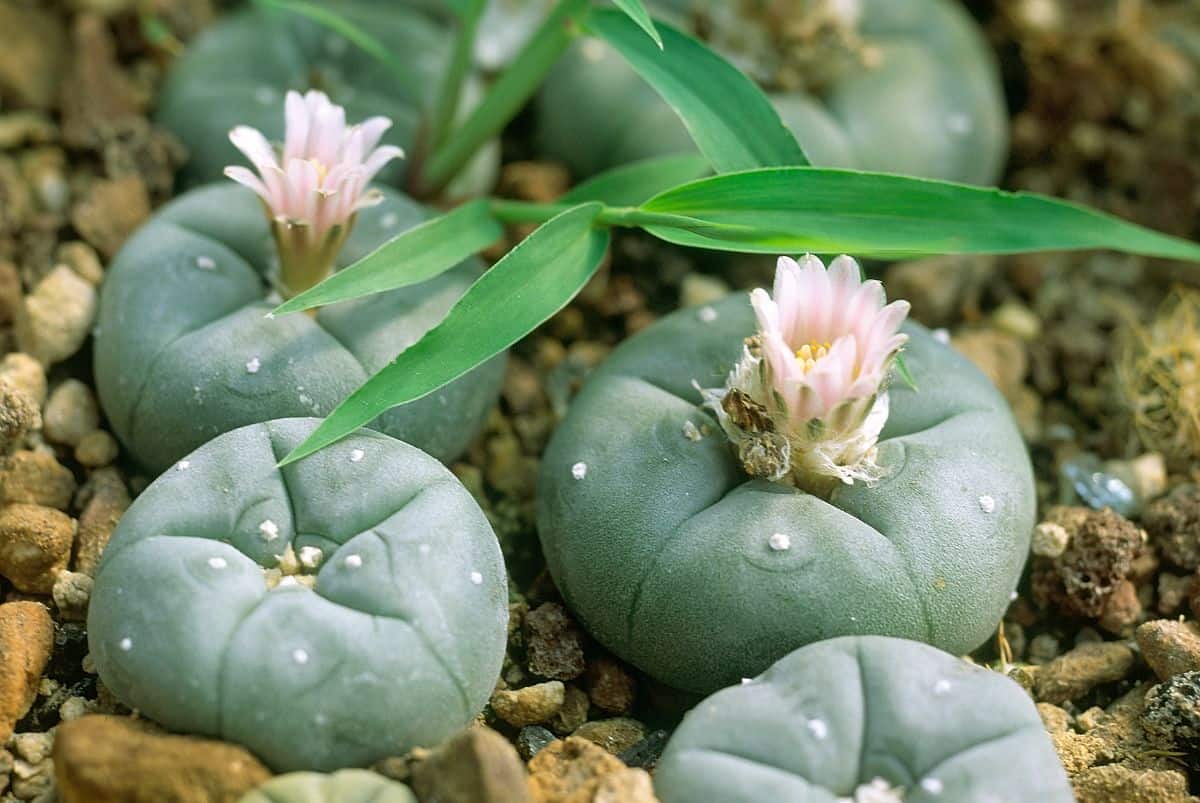
Peyote, or Lophocereus williamsii, is an ancient succulent that has been used for thousands of years as a religious element, a spiritual journey, and more. It is a hallucinogenic cactus, but for all intents and purposes, it is definitely edible.
Outside of the hallucinogenic properties, peyote can be used to induce vomiting when eaten in large quantities. This specific cactus is protected and illegal to own outside of the Native American Church.
8. Portulacaria afra
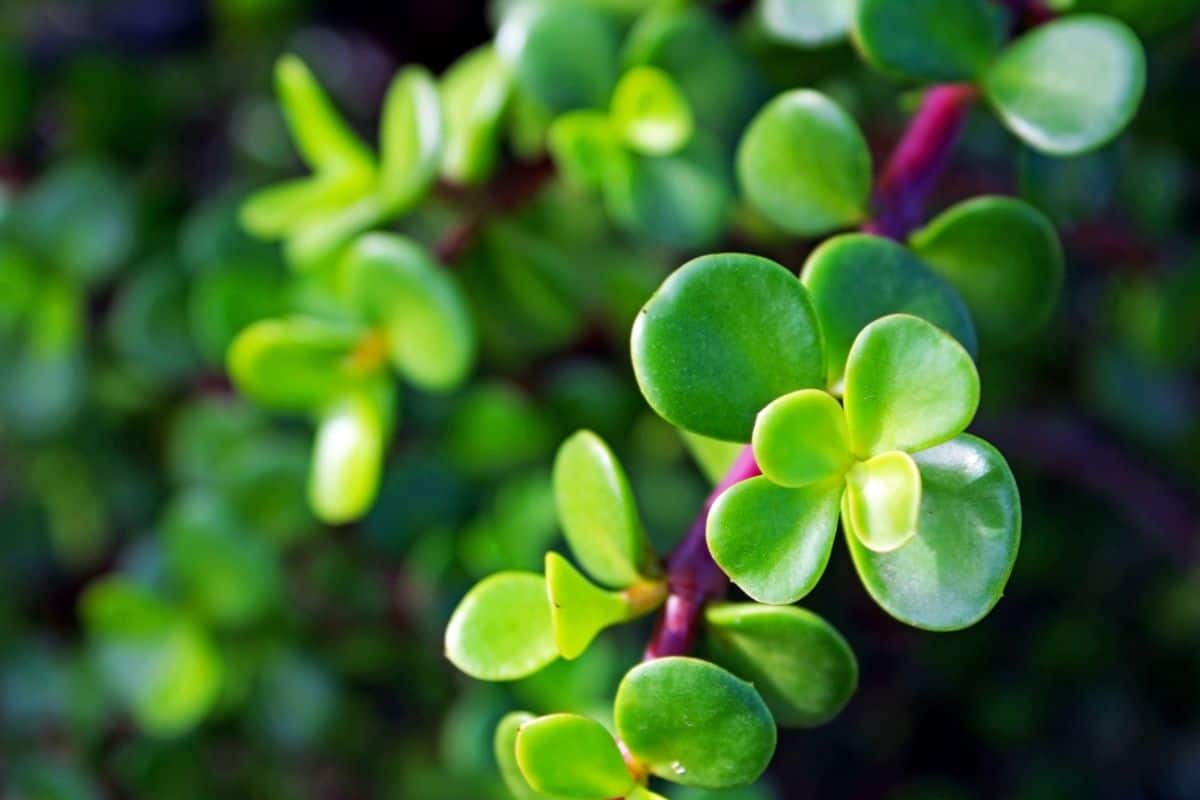
Buy it from:
Do you know how hard it is to find P. afra? It took me months to find one that wasn’t already part of an arrangement, variegated, or the broad-leaf kind! I tend to shop locally, so this was a big challenge. Elephant’s Food/Foot is somewhat of a vitamin C booster for your body.
Most of the time, it is easy to just strip the stems of the leaves (don’t eat the stems) and use them as a zingy garnish. In other cases, you may want to cook them up like chayote, which is a tart squash from Mexico. Cook until soft, and add desired seasonings.
9. Portulaca oleracea
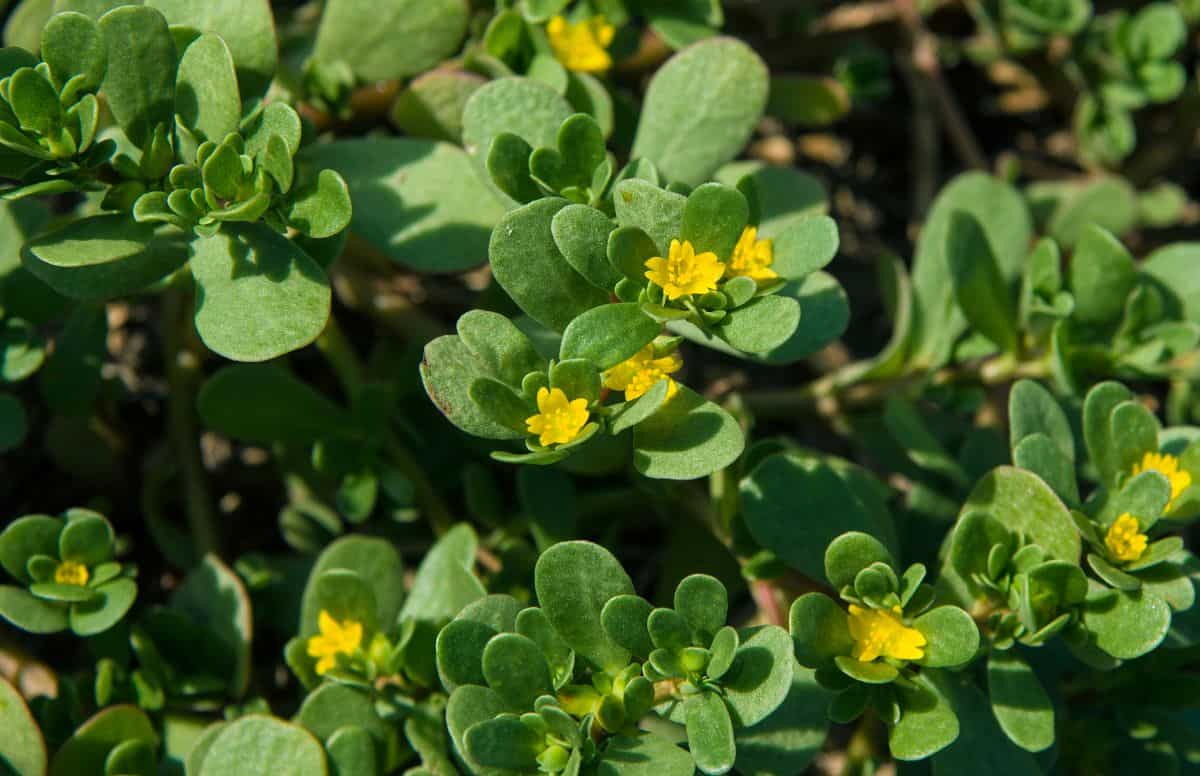
Buy it from:
If you don’t have common purslane in your garden, then you need to get it in there ASAP. This plant, eaten raw or cooked, is considered to be highly edible, tangy, and full of endless vitamins. Vitamins A, C, K, and plenty of iron and Omega 3’s (which are normally found in fish) make this plant a complete snack. It is easy to grow and often used to help fill in open spaces. Who knew such a filler plant was also a great way to boost your system?
10. Yucca Flower
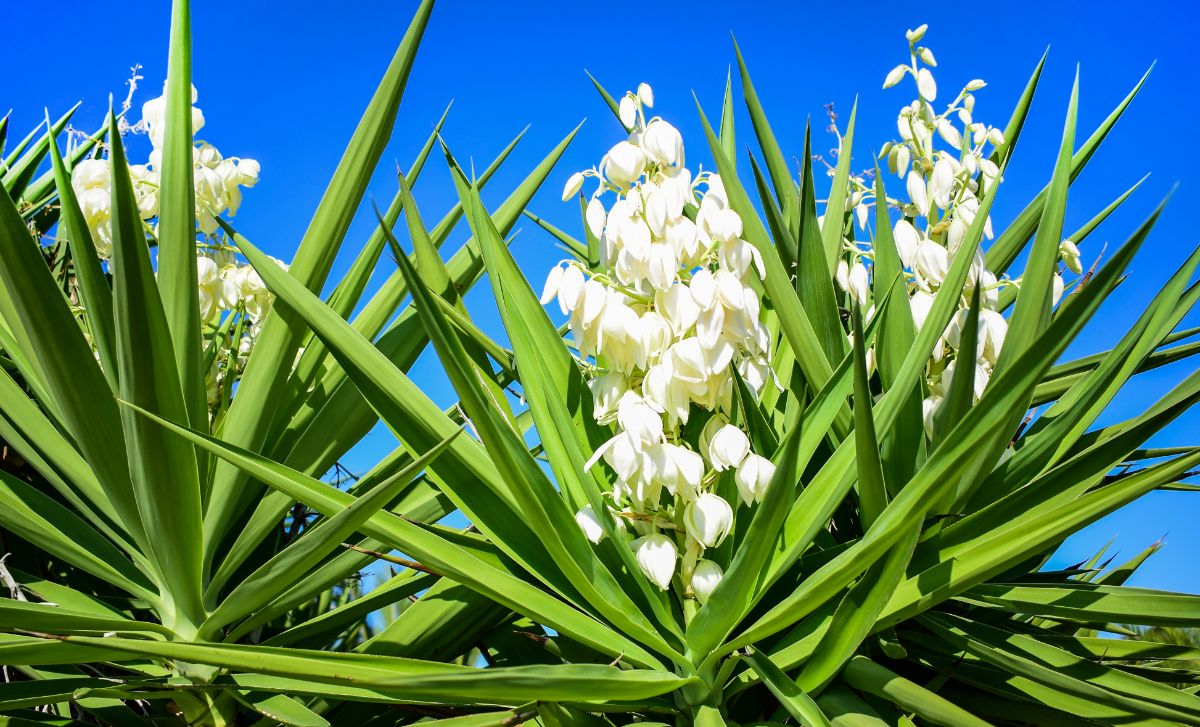
Buy it from:
First and foremost, don’t assume that all yucca flowers are edible! Always research and make sure.
Now that that is out of the way, yucca flowers are the most edible part of the yucca plant. The flowers are savory and can be eaten in their entirety. Some people may have an allergic reaction to them which can make your throat itch, so be careful when first trying this treat. The best way to try them is to stir-fry them first in oil with minimal seasonings. From there, feel free to experiment and have fun!
11. Salicornia europaea
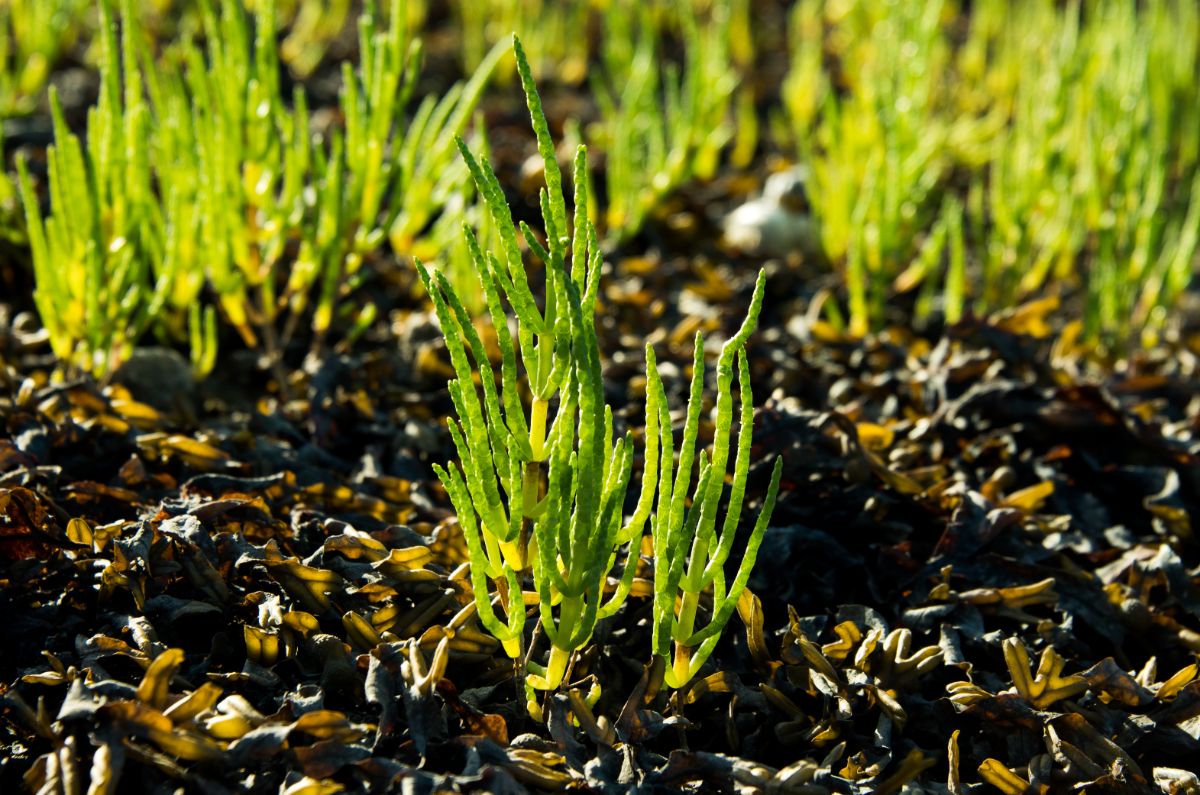
Buy it from:
During my last trip to the coast, I thought that perhaps I had seen some of these Sea Beans, but alas, they only naturally grow along the coasts of Europe. The species is a salt or brine-based species that grows in seaside marshes.
It has a naturally salty crunch to it and can be a delicious snack. It is possible to grow your in the states; however, it requires very sandy soil, and it absolutely must be watered with salted water. They can be eaten raw, cooked, and seasoned, essentially like any other vegetable.
12. Hoodia Gordonii
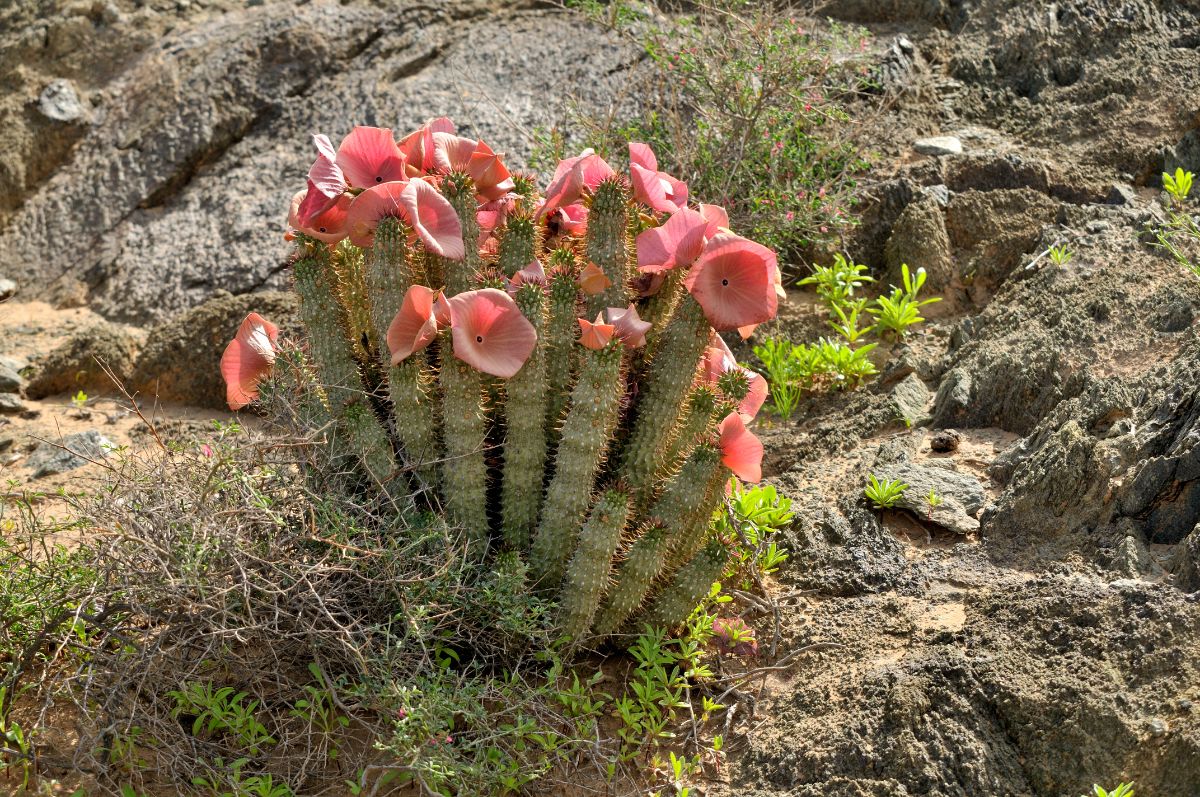
Buy it from:
I love a good stapeliad just as much as the next person. The flowers are extraordinary and alien looking, and the columns are usually intense with color and vibrancy. The same can be said for H. gordonii. In America, it is known as an appetite suppressant, just as it would have been used in South Africa to help when food was scarce.
All you have to do is slice off the spines and munch down on the cactus. Most people report that it tastes and feels like eating a cucumber!
Conclusion
While not all plants are edible, there are a few in almost every genus that can be eaten, or at least some part of them can be eaten. The same can be said for succulents. Those listed here provide their own fruit, or they can easily be stripped from stems or cooked like vegetables. My personal favorites are still going to be Prickly Pear and Dragon fruit, but I look forward to working more succulents into my regular diet.
Are you going too?
Do you have any succulent recipes? Share them below! Are you missing some of the succulents? Find out where to buy them online!


Dror
You left out at least one more edible succulent i know about called portulacaria. The leaves are edible with a sour taste.
Steve Miller
How can we tell the difference between a barrel cactus and a young saguaro?
Patrick Grubbs
That's an interesting question. They definitely can look pretty similar.
Unless we're talking about seedlings, saguaro tend to take on that elongated look pretty early. A barrel cactus shouldn't unless it's etiolated.
It's pretty indirect, but growth speed would reveal the difference. Saguaro grows extremely slowly - something like 1 foot every 10 years. Most barrel cacti reach maturity in that time.
And, of course, the price tag would let you know! Saguaro are worth their weight in gold it seems!